Sickle Cell Anemia

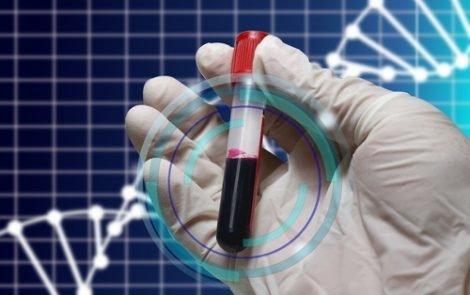
What is sickle cell anemia?
Sickle cell anemia, or sickle cell disease (SCD), is a genetic disease of the red blood cells (RBCs). Normally, RBCs are shaped like discs, which gives them the flexibility to travel through even the smallest blood vessels. However, with this disease, the RBCs have an abnormal crescent shape resembling a sickle. This makes them sticky and rigid and prone to getting trapped in small vessels, which blocks blood from reaching different parts of the body. This can cause pain and tissue damage.
SCD is an autosomal recessive condition. You need two copies of the gene to have the disease. If you have only one copy of the gene, you are said to have sickle cell trait.
![tumblr_md311fYu091rq81j2o1_500.jpg]
(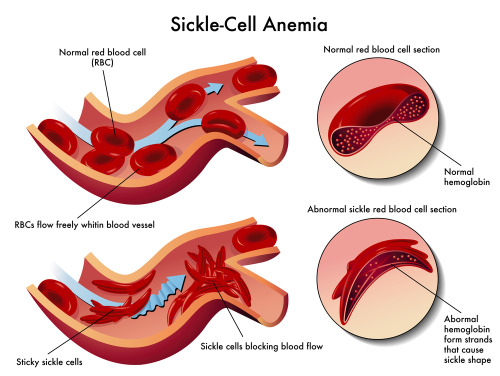 )
)
SYMPTOMS
What are the symptoms of sickle cell anemia?
Symptoms of sickle cell anemia usually show up at a young age. They may appear in babies as early as 4 months old, but generally occur around the 6-month mark.
While there are multiple types of SCD, they all have similar symptoms, which vary in severity. These include:
• excessive fatigue or irritability, from anemia
• fussiness, in babies
• bedwetting, from associated kidney problems
• jaundice, which is yellowing of the eyes and skin
• swelling and pain in hands and feet
• frequent infections
• pain in the chest, back, arms, or legs
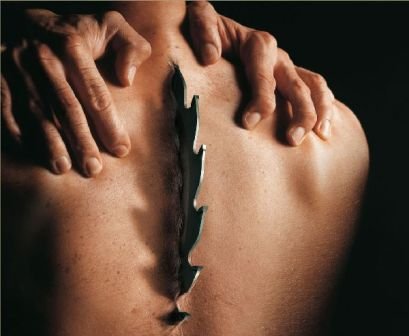
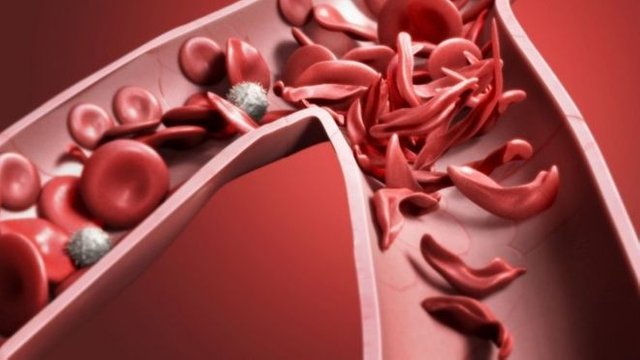
TYPES
What are the types of sickle cell disease?
Hemoglobin is the protein in red blood cells that carries oxygen. It normally has two alpha chains and two beta chains. The four main types of sickle cell anemia are caused by different mutations in these genes.
Hemoglobin SS disease
Hemoglobin SS disease is the most common type of sickle cell disease. It occurs when you inherit copies of the hemoglobin S gene from both parents. This forms hemoglobin known as Hb SS. As the most severe form of SCD, individuals with this form also experience the worst symptoms at a higher rate.
Hemoglobin SC disease
Hemoglobin SC disease is the second most common type of sickle cell disease. It occurs when you inherit the Hb C gene from one parent and the Hb S gene from the other. Individuals with Hb SC have similar symptoms to individuals with Hb SS. However, the anemia is less severe.
Hemoglobin SB+ (beta) thalassemia
Hemoglobin SB+ (beta) thalassemia affects beta globin gene production. The size of the red blood cell is reduced because less beta protein is made. If inherited with the Hb S gene, you will have hemoglobin S beta thalassemia. Symptoms are not as severe.
Hemoglobin SB 0 (Beta-zero) thalassemia
Sickle beta-zero thalassemia is the fourth type of sickle cell disease. It also involves the beta globin gene. It has similar symptoms to Hb SS anemia. However, sometimes the symptoms of beta zero thalassemia are more severe. It is associated with a poorer prognosis.
Hemoglobin SD, hemoglobin SE, and hemoglobin SO
These types of sickle cell disease are more rare and usually don’t have severe symptoms.
Sickle cell trait
People who only inherit a mutated gene (hemoglobin S) from one parent are said to have sickle cell trait. They may have no symptoms or reduced symptoms.
RISK FACTORS
Who is at risk for sickle cell anemia?
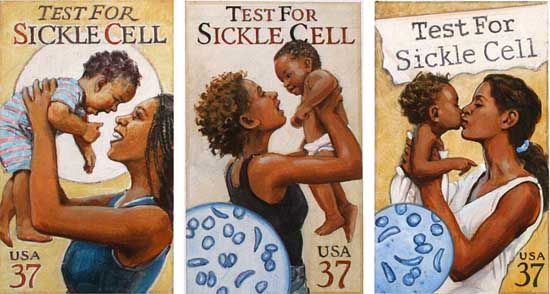
Children are only at risk for sickle cell disease if both parents carry sickle cell trait. A blood test called a hemoglobin electrophoresis can also determine which type you might carry.
People from regions that have endemic malaria are more likely to be carriers. This includes people from:
• Africa
• India
• the Mediterranean
• Saudi Arabia
COMPLICATIONS
What complications can arise from sickle cell anemia?
SCD can cause severe complications, which appear when the sickle cells block vessels in different areas of the body. Painful or damaging blockages are called sickle cell crises. They can be caused by a variety of circumstances, including:
• illness
• changes in temperature
• stress
• poor hydration
• altitude
The following are types of complications that can result from sickle cell anemia.
Severe anemia
Anemia is a shortage of RBCs. Sickle cells are easily broken. This breaking apart of RBCs is called chronic hemolysis. RBCs generally live for about 120 days. Sickle cells live for a maximum of 10 to 20 days.
Hand-foot syndrome
Hand-foot syndrome occurs when sickle-shaped RBCs block blood vessels in the hands or feet. This causes the hands and feet to swell. It can also cause leg ulcers. Swollen hands and feet are often the first sign of sickle cell anemia in babies.
Splenic sequestration
Splenic sequestration is a blockage of the splenic vessels by sickle cells. It causes a sudden, painful enlargement of the spleen. The spleen may have to be removed due to complications of sickle cell disease in an operation known as a splenectomy. Some sickle cell patients will sustain enough damage to their spleen that it becomes shrunken and ceases to function at all. This is called autosplenectomy. Patients without a spleen are at higher risk for infections from bacteria such as Streptococcus, Haemophilus, and Salmonella species.
Delayed growth
Delayed growth often occurs in people with SCD. Children are generally shorter but regain their height by adulthood. Sexual maturation may also be delayed. This happens because sickle cell RBCs can’t supply enough oxygen and nutrients.
Neurological complications
Seizures, strokes, or even coma can result from sickle cell disease. They are caused by brain blockages. Immediate treatment should be sought.
Eye problems
Blindness is caused by blockages in the vessels supplying the eyes. This can damage the retina.
Skin ulcers
Skin ulcers in the legs can occur if small vessels there are blocked.
Heart disease and chest syndrome
Since SCD interferes with blood oxygen supply, it can also cause heart problems which can lead to heart attacks, heart failure, and abnormal heart rhythms.
Lung disease
Damage to the lungs over time related to decreased blood flow can result in high blood pressure in the lungs (pulmonary hypertension) and scarring of the lungs (pulmonary fibrosis). These problems can occur sooner in patients who have sickle chest syndrome. Lung damage makes it more difficult for the lungs to transfer oxygen into the blood, which can result in more frequent sickle cell crises.
Priapism
Priapism is a lingering, painful erection that can be seen in some men with sickle cell disease. This happens when the blood vessels in the penis are blocked. It can lead to impotence if left untreated.
Gallstones
Gallstones are one complication not caused by a vessel blockage. Instead, they are caused by the breakdown of RBCs. A byproduct of this breakdown is bilirubin. High levels of bilirubin can lead to gallstones. These are also called pigment stones.
Sickle chest syndrome
Sickle chest syndrome is a severe type of sickle cell crisis. It causes severe chest pain and is associated with symptoms such as cough, fever, sputum production, shortness of breath, and low blood oxygen levels. Abnormalities observed on chest X-rays can represent either pneumonia or death of lung tissue (pulmonary infarction). The long-term prognosis for patients who have had sickle chest syndrome is worse than for those who have not had it.
DIAGNOSIS
How is sickle cell anemia diagnosed?
All newborns in the United States are screened for sickle cell disease. Prebirth testing looks for the sickle cell gene in your amniotic fluid.
In children and adults, one or more of the following procedures may also be used to diagnose sickle cell disease.
Detailed patient history
This condition often first appears as acute pain in the hands and feet. Patients may also have:
• severe pain in the bones
• anemia
• painful enlargement of the spleen
• growth problems
• respiratory infections
• ulcers of the legs
• heart problems
Your doctor may want to test you for sickle cell anemia if you have any of the symptoms mentioned above.
Blood tests
Several blood tests can be used to look for SCD:
• Blood counts can reveal an abnormal Hb level in the range of 6 to 8 grams per deciliter.
• Blood films may show RBCs that appear as irregularly contracted cells.
• Sickle solubility tests look for the presence of Hb S.
Hb electrophoresis
Hb electrophoresis is always needed to confirm the diagnosis of sickle cell disease. It measures the different types of hemoglobin in the blood.


TREATMENT
How is sickle cell anemia treated?
A number of different treatments are available for SCD:
• Rehydration with intravenous fluids helps red blood cells return to a normal state. The red blood cells are more likely to deform and assume the sickle shape if you’re dehydration.
• Treating underlying or associated infections is an important part of managing the crisis, as the stress of an infection can result in a sickle cell crisis. An infection may also result as a complication of a crisis.
• Blood transfusions improve transport of oxygen and nutrients as needed. Packed red cells are removed from donated blood and given to patients.
• Supplemental oxygen is given through a mask. It makes breathing easier and improves oxygen levels in the blood.
• Pain medication is used to relieve the pain during a sickle crisis. You may need over-the-counter drugs or strong prescription pain medication like morphine.
• Hydroxyurea (Droxia, Hydrea) helps to increase production of fetal hemoglobin. It may reduce the number of blood transfusions.
• Immunizations can help prevent infections. Patients tend to have lower immunity.
Bone marrow transplant has been used to treat sickle cell anemia. Children younger than 16 years of age who have severe complications and have a matching donor are the best candidates.

Home care
There are things you can do at home to help your sickle cell symptoms:
• Use heating pads for pain relief.
• Take folic acid supplements, as recommended by your doctor.
• Eat an adequate amount of fruits, vegetables, and whole-wheat grains. Doing so can help your body make more RBCs.
• Drink more water to reduce the chances of sickle cell crises.
• Exercise regularly and reduce stress to reduce crises, too.
• Contact your doctor immediately if you think you have any type of infection. Early treatment of an infection may prevent a full-blown crisis.
Support groups can also help you deal with this condition.
OUTLOOK
What is the long-term outlook for sickle cell disease?
The prognosis of the disease varies. Some patients have frequent and painful sickle cell crises. Others only rarely have attacks.
Sickle cell anemia is an inherited disease. Talk to a genetic counselor if you’re worried that you might be a carrier. This can help you understand possible treatments, preventive measures, and reproductive options.
if you like my post, please follow me and upvote my post @suhairalzain
Hi! I am a robot. I just upvoted you! I found similar content that readers might be interested in:
http://www.healthline.com/health/sickle-cell-anemia
Downvoting a post can decrease pending rewards and make it less visible. Common reasons:
Submit
hi@suhairalzain!!
amazing post very informative ....upvoted
Downvoting a post can decrease pending rewards and make it less visible. Common reasons:
Submit
thanks
Downvoting a post can decrease pending rewards and make it less visible. Common reasons:
Submit
Very informative, Sickle cell patient are warriors am one of them💪🏿💪🏿
Downvoting a post can decrease pending rewards and make it less visible. Common reasons:
Submit